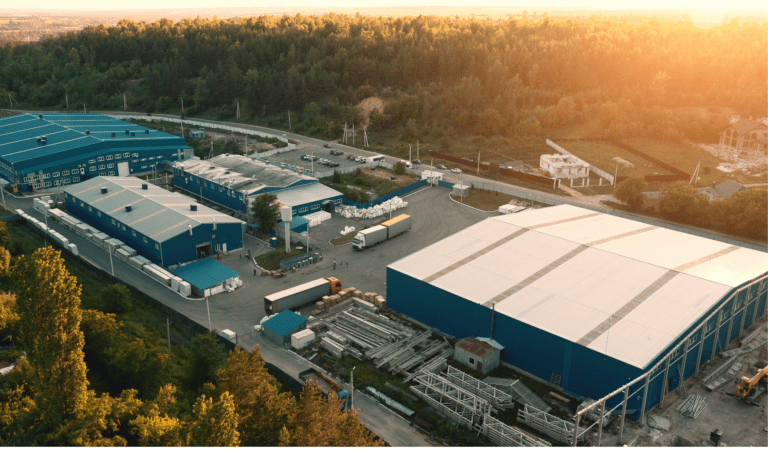As a contractor or someone directly involved in the oilfield services industry, regulations, technology, as well as the impact of COVID-19 has had lasting ramifications industry-wide that will be important to watch in the coming years.
In this post, we’ve highlighted 11 trends and statistics to pay attention to that could shape the outlook for the industry for years to come, and a practical first step you can take.
1. Combined free cashflow from publicly-traded independent oil producers is estimated to reach an all-time high of $346B in 2021 –Bloomberg
This is a high not seen since 2008. With years of losses in areas like shale expected to rebound as demand surges post-pandemic, profits aren’t likely to be reinvested in new output, but in other areas to sustain operations.
A key area of focus will likely be related to maintenance and reducing equipment downtime, critical to maximizing profits by reducing inefficiencies day-to-day.
2. Oilfield maintenance and operations spending expected to reach $205B by 2023 –Technavio
With maintenance and operations spending already at 175 billion in 2021, continued investment into maintaining equipment analysts believe will continue into 2023.
Increasing efficiency and safety as opposed to productivity will also be important, as industry players look to modernize and maintain their existing sites as opposed to investing in new ones.
3. 49% of employees expect pay to rise in 2021 and beyond, compared to 18% who expect further reductions –Global Energy Talent Index
For the first time, 29% of oil and gas professionals reported a decline in pay, compared to 28% who reported an increase. This is mainly pandemic-related, considering nearly 50% expect a rise in pay within 12 months.
In addition, nearly 60 percent of industry professionals surveyed feel their employer will be able to adapt to both recent and future change.
4. Over 75% of oilfield workers would consider a job change within 3 years, half of which would seek a permanent position –Global Energy Talent Index
This trend is one worth paying attention to, as more employees are looking to work for permanent positions at companies that are more vertically integrated.
Career progression as opposed to job security was noted as the primary reason.
5. 78% of oil and gas professionals feel less secure in their jobs than a year ago –Global Energy Talent Index
Another takeaway Airswift provided noted in relation to the Global Energy Talent Index indicates that job security in the aftermath of the COVID-19 pandemic has caused many in the sector to feel uneasy.
With the possibility of new regulations and the constantly changing market, it’s nothing new for Oil and Gas, as Airswift’s CEO Janette Marx stated:
“There is no denying that this has been a challenging year for the energy industry, and COVID-19-related instability is certainly being felt by the workforce. But oil and gas is a resilient sector, which has learned several lessons from the last major downturn.”
6. Only about 20% of lost oilfield jobs lost due to the COVID-19 pandemic have been recovered –Energy Workforce & Technology Council
As you’re well aware, a lot goes into the decision to boost production, which analysts expect to correlate in employment increases.
A few factors including development or cancellation of pipeline projects obviously has had an impact, in addition to jobs that remain unfilled due to labor shortages.
7. Oilfield fatalities continue to decrease with improved safety standards –IOGP
As many oil and gas producers in states like North Dakota align with OSHA to promote safer job sites, the number of fatalities is beginning to decrease, according to the International Association of Oil & Gas Producers.
In 2020, the number of oilfield fatalities decreased from 25 to 14 among IOGP member companies in the report.
While deaths rise and fall based on production and external factors from year to year, the percentage of fatalities is definitely being impacted by improved safety standards and technology.
8. Shale gas extraction expected to experience a continued annual growth rate of 9% from 2021-2026 –Mordor Intelligence
Newer developments like horizontal drilling technologies and other advances are poised to fuel growth in shale extraction according to experts, with setbacks largely due to COVID-19 in this industry sector.
While there are still opportunities for new players to enter the market, the collision of environmental concerns combined with an emphasis on technology and safer extraction methods will likely impact this growth rate.
9. 80% of oil and gas companies are investing a moderate to high amount in digital technologies relative to their total budget –Ernst & Young
COVID-19, as in many other industries, have accelerated plans many organizations in oilfield services have had to adopt digital technology.
As opposed to pre-pandemic levels of investment, planned digital technology investment for companies in oilfield services has increased 12 percentage points according to the study.
While the industry has been slow to adopt many digital technologies (like using apps to inspect equipment), 92% agree that their organization will have to change the way it operates in the near future to adapt.
10. De-carbonization initiatives and investment in low-carbon liquids and gases expected to increase –McKinsey
While disruption in oil and gas has been on the radar for some time now, expect companies in oilfield services to be challenged to move to electrification, carbon capture technologies, and making changes like switching to electric generators and equipment on-site, according to McKinsey.
Portfolios for energy companies are also likely to include more low-carbon alternatives to fossil fuels, which could impact the growth of the sector.
While different strategies will be used upstream (extraction and drilling) vs downstream in the supply chain to reduce emissions, the impact will be felt by nearly all that support this industry.
11. A skills gap shortage, aging workforce, and attracting young talent are among the top challenges in oilfield services –Bayport Technical
Newer technology, combined with a skilled labor shortage to support this technology, will likely continue to remain a challenge in the near future.
As an example, the average age of a worker in petroleum is 50 years, and the number of retirees is expected to outpace the rate of entrance into the industry by younger graduates.
With many jobs requiring significant on-site training, lack of training also poses a challenge when younger employees enter the workforce.
Vivek Kumar of Industry Wired also makes note of this reality in a recent article, stating:
“Many reports reveal that millennials are tentative to make a career in the industry. This is significantly because of the concerns around the consistency of the industry in the future, contributing to a workforce shortage in the industry. As millennials are becoming more tech-savvy, they want to work in innovative and evolving green energy industries.”
One of the keys to attracting this talent will be for companies to highlight their commitment to technology that will make things like exploration safer, while adapting to new environmental regulations by implementing newer technologies.
But it won’t be an overnight process.
A practical step to prepare for the future today
While there still is a good deal of uncertainty in the industry, one of the most practical first steps your organization can implement is the elimination of paperwork or inefficient processes.
One of the best places to start is with vehicle or equipment inspections.
The Whip Around app is used by some of the largest contractors and major players in oil and gas because it eliminates paper inspection forms, and allows managers to finally have a clear picture of the health of their fleet.
If you’re ready to make fleet inspections and maintenance easier for the safety of employees, book a demo at your convenience and one of our product specialists would be happy to walk you through the platform.




